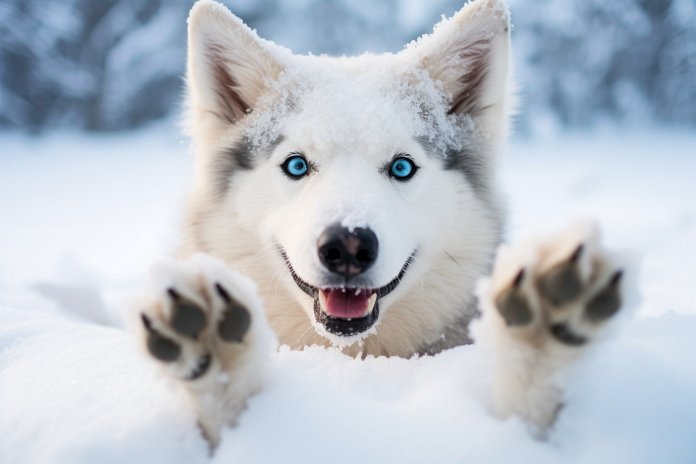
Different species react differently to temperature changes. Humans wear heavy clothing and jackets to stay warm, while animals like bears hibernate to survive the cold. Our dogs also have to adapt to changing conditions. Some dogs can shed and regrow a coat that helps regulate their body temperature in the cold. However, it’s important to consider if dogs can feel the cold on their feet.
Signs Your Dog May Have Cold Feet
When it gets freezing outside, we prepare by buying coats, boots, and gloves. But our dogs still need to go on walks and go outside. They walk on cold pavement or through snow, so we need to watch for signs that their feet may be cold. Shaking and dropped ears are indicators that they are feeling cold or in pain. Other signs include whining, shaking, whimpering, and licking their paws.
A History of Dogs Getting Cold Feet
Dogs have been around for thousands of years and have become domesticated to live with humans. It’s likely that people discovered dogs could feel things like we do. Dogs have adapted to handle the cold with padding on their feet and tough skin. While it’s not documented when dogs first started having cold feet, it’s assumed they have always been able to feel the cold on their feet.
The Science Behind Cold Paws
Dogs are equipped to handle the cold to a certain extent. Different breeds have different ways of handling harsh temperatures. Long-haired dogs can keep warmer in winter, while short-haired dogs are better in warmer months. Dogs have adapted to varying climate changes over the years.
Training Your Dog to Handle the Cold
When dogs go outside, they may stay outside to play or bask in the sun. It’s important to train them to know when to come inside to avoid freezing. You can train them to come inside by calling their name or using a clicker. Positive reinforcement and checking their paws after they come inside can help protect them from the cold.
“Protect your pup’s paws from the cold – signs to watch for and training tips”

Tips & Things to Know
1️⃣ Dogs, like humans, can feel cold and it can affect their feet too. Some signs that your dog’s feet are cold include shaking, whining, whimpering, limping or walking slowly, laying near a heat source, and licking their paws.
2️⃣ Dogs have adapted over time to survive harsh winter conditions with features like padding on their feet and tough skin. However, they aren’t completely immune to cold. Different breeds have various tolerance levels to cold, with long-haired dogs generally being able to stay warmer in colder months compared to short-haired ones.
3️⃣ It is important to train your dog to come inside when it gets too cold, especially if they enjoy playing in the snow. Rewarding them with treats or using training tools like a clicker can help. Remember to check their paws for any signs of cold or damage after they have been outside in cold weather.
Frequently Asked Questions, Answered ✅
1. How can you tell if your dog’s feet are cold?
– Some signs include shaking, dropped ears, whining, shaking, and whimpering.
2. Why do dogs feel the cold on their feet?
– Dogs have adapted to handle the cold, but they are not immune to its effects. Their paws have padding and tough skin, but they can still feel the cold.
3. Do different dog breeds handle the cold differently?
– Yes, different breeds have different ways of handling the cold. Long-haired dogs can keep themselves warmer, while short-haired dogs may struggle in colder temperatures.
4. How can you train your dog to come inside during cold weather?
– You can train your dog to come inside by calling their name, using a clicker as a signal, and positively reinforcing their behavior with treats.
5. Should you check your dog’s paws after they come inside from the cold?
– Yes, it is a good idea to check your dog’s paws after they come inside to ensure they are in good condition and not experiencing any issues from the cold.